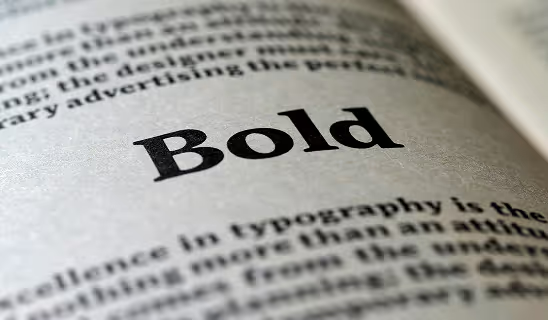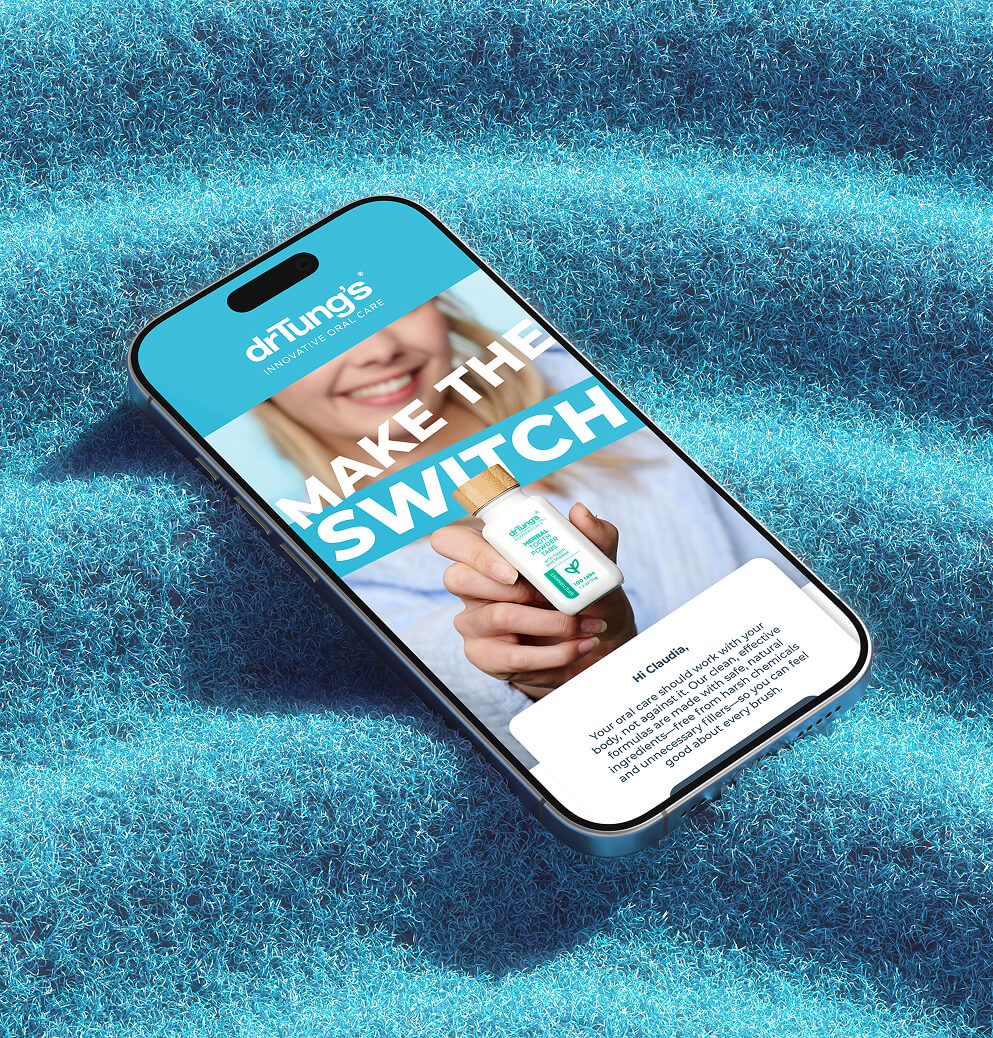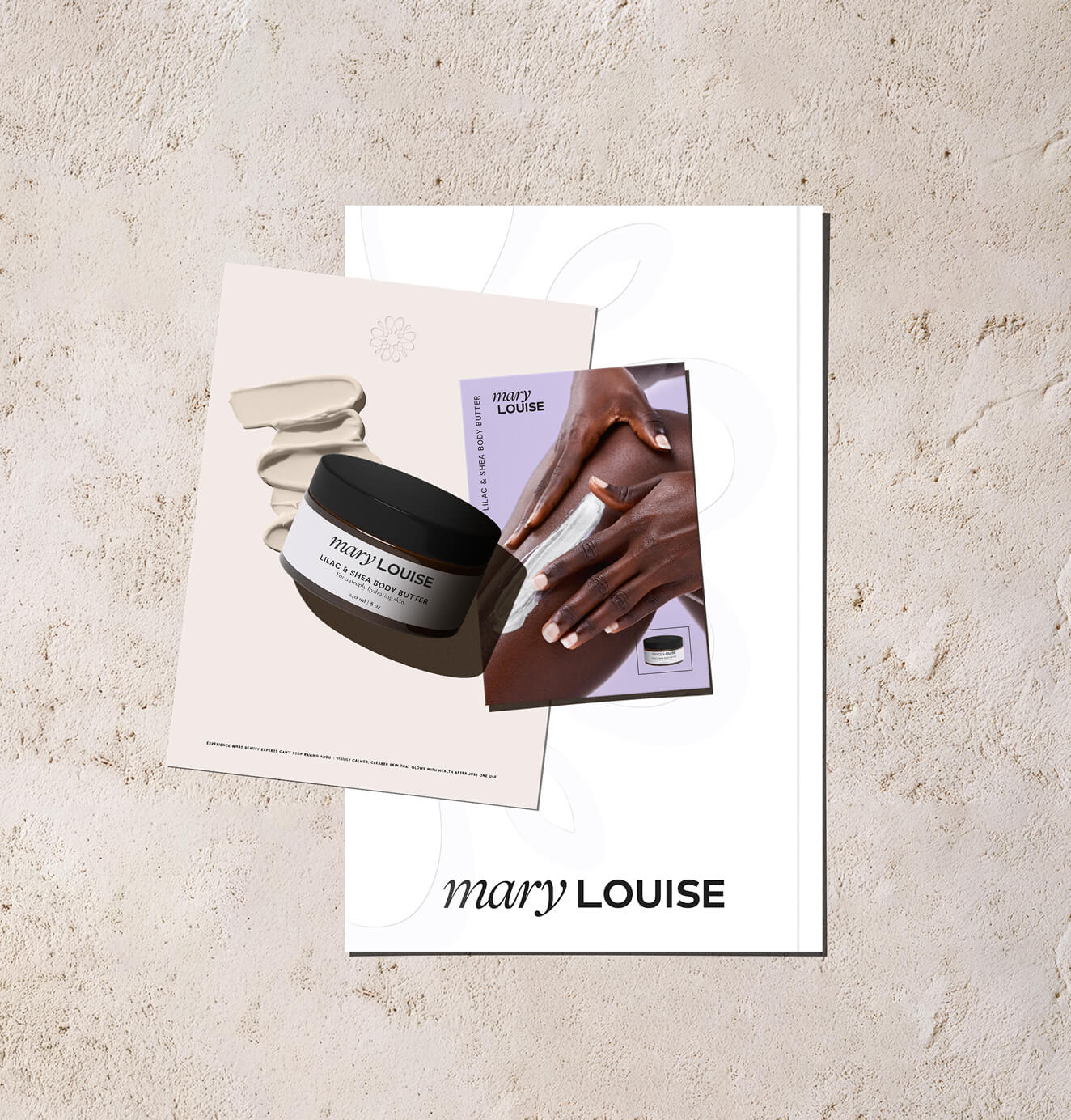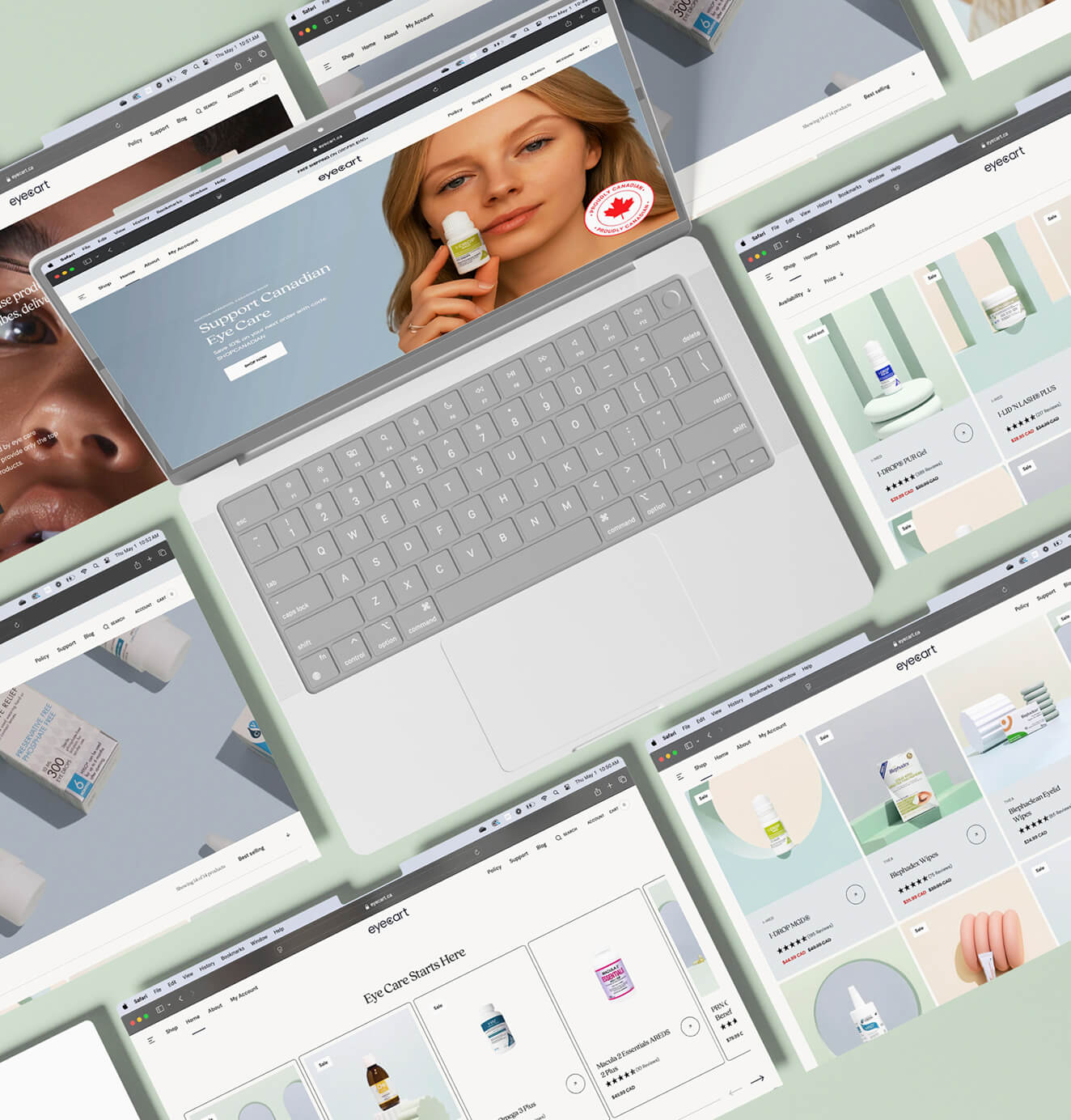Understanding Brand Kit Design: The Essentials for Your Brand's Identity
03/05/2025
Branding / Brand Strategy
A well-crafted brand kit is the foundation of a strong brand identity—this guide covers the key elements needed to ensure consistency and recognition across all platforms.

A strong and consistent brand identity is the foundation of any successful business. In today’s competitive landscape, where consumers are bombarded with endless choices, a well-defined brand presence helps create recognition, trust, and loyalty. This is where a brand kit becomes an essential tool—it’s more than just a collection of logos and colors; it’s a strategic blueprint that defines how your brand looks, feels, and communicates across all platforms. Whether you're launching a new brand or refining an existing one, having a cohesive brand kit ensures consistency, professionalism, and impact. In this guide, we’ll explore the key elements of a brand kit, why it matters, and how you can create one that authentically represents your brand’s identity.
.png)


Introduction to "What is a Brand Kit?"



In the dynamic world of branding and marketing, establishing a strong and consistent brand identity is crucial.
This is where a brand kit comes into play.
Often overlooked, a brand kit is a powerhouse tool that encapsulates the essence of your brand’s visual and communicative identity by providing visual materials and assets for maintaining a consistent brand visual identity.
It serves as a compass, guiding everything from your marketing materials to your online presence, ensuring that your brand is recognizable, coherent, and impactful.
At its core, a brand kit is much more than just a collection of logos and color schemes. It’s a strategic blueprint that communicates your brand’s personality, values, and mission through a carefully curated set of design elements and guidelines.
Whether you’re a startup crafting your brand identity from scratch or an established company looking to refine your brand’s image, understanding the significance of a brand kit is the first step towards creating a lasting impression in the minds of your audience.
A brand kit, in its simplest form, is a comprehensive set of tools that defines and represents a company’s brand identity.
It’s a visual and textual representation of what your brand stands for, encompassing everything from your logo and color palette to your typography and brand voice and so much more. It plays a crucial role in maintaining the brand’s visual identity by ensuring consistency in the use of color palettes, typography, and other brand elements.
Think of it as a DNA blueprint for your brand, providing a consistent reference for how your brand should be portrayed across various mediums.
What Does a Brand Kit Include?
- Logo: This is often the most recognizable element of a brand. A brand kit typically includes different variations of your logo (such as full logo, icon, monogram) and guidelines on how to use them.
- Color Palette: These are the colors that represent your brand. A brand kit will specify primary, secondary, and even tertiary colors along with their exact color codes (like RGB, CMYK, Pantone, or HEX) to ensure consistency. Setting up the brand’s color palette in Canva allows for easy access across content. Defining and storing the brand's color palette is crucial as part of the visual identity and design guidelines.
- Typography: This includes the specific fonts your brand uses. A brand kit will detail which typefaces to use in different contexts, their sizes, and styles (like bold or italic). Clear guidelines related to brand fonts are essential for maintaining consistency.
- Imagery: This covers the style of photography, illustrations, and other visual elements that align with your brand’s identity.
- Brand Voice and Tone: While not always visually represented, the brand kit often includes guidelines on the brand’s voice and tone, ensuring consistent communication style.
- Brand Guidelines: This is a document that ties all the elements together, explaining how to use the various components of your brand kit correctly. It ensures that anyone who works on your brand, be it internally or externally, maintains consistency.
Key Components of a Brand Kit
Understanding the individual elements of a brand kit is crucial for creating a cohesive and impactful brand identity.
Each component plays a specific role in conveying your brand’s message and values. A well-crafted brand kit also helps in defining the brand aesthetic, ensuring that the visual style and appearance of your brand are consistent and distinctive. Each element contributes to the essential core elements that convey the brand message and identity.
Let's break down these key components:
1. Logo: The Cornerstone of Your Brand Identity
- Importance: Your logo is often the first visual interaction someone has with your brand. It's a symbol that can convey the essence of your brand at a glance.
- Variations: A comprehensive brand kit includes different logo formats (e.g., full logo, simplified icon, monogram) for various uses, ensuring versatility across different mediums.
2. Color Palette: More Than Just Aesthetic Appeal
- Defining Brand Personality: Colors evoke emotions and associations. Your brand's color palette should reflect the feelings and values you want to associate with your brand.
- Consistency Across Platforms: The specific color codes in your brand kit ensure that your brand colors are accurately replicated in all your materials, online and offline.
3. Typography: Communicating with Style
- Font Styles and Their Impact: The choice of fonts influences how your textual content is perceived. Whether it's elegant, modern, or quirky, your typography should align with your brand's character.
- Guidelines for Use: Your brand kit should specify which fonts to use in different contexts (like headings, body text) and include guidelines for sizes, spacing, and style usage.
4. Imagery: Visual Storytelling
- Types of Images and Graphics: This includes the style and type of photographs, illustrations, icons, and other graphics that complement your brand's identity.
- Creating an Emotional Connection: The imagery in your brand kit should resonate with your target audience, helping to tell your brand's story and reinforce its personality.
5. Brand Voice and Tone: The Personality Behind the Words
- Communicating Your Brand's Essence: How your brand communicates, whether it's friendly, professional, or playful, should be consistent across all platforms.
- Guidelines for Messaging: Your brand kit may include key phrases, jargon, or tone suggestions to ensure that your brand's voice is uniform in all communications.
6. Brand Guidelines: The Rulebook for Consistency
- Comprehensive Instructions: This document within your brand kit explains how to use all the other elements correctly and effectively.
- Ensuring Uniformity: It serves as a reference for anyone who works with your brand, ensuring that they represent it accurately.
Benefits of Having a Brand Kit












A well-crafted brand kit is more than just a set of guidelines; it's a strategic asset for your business.
Here are some of the key benefits of having a brand kit:
1. Consistency Across Platforms
- Uniform Brand Identity: A brand kit ensures that every aspect of your brand’s presence, from your website to your business cards, is consistent. This uniformity helps in building a cohesive brand image and achieving consistent branding across various marketing assets.
- Enhanced Brand Recognition: Consistent use of logos, colors, and fonts makes your brand easily
2. Time and Resource Efficiency
- Streamlined Design Process: With a brand kit in place, designers and marketers don't have to guess about color codes or font sizes, speeding up the design process.
- Reduced Errors and Revisions: Clear guidelines minimize the chances of off-brand content, reducing the need for revisions and rework.
3. Brand Recognition and Loyalty
- Building Trust: Consistency in branding helps build trust with your audience. When customers see the same colors, logos, and styles across different platforms, they feel more secure about the brand's reliability.
- Fostering Brand Loyalty: A strong, consistent brand identity can foster an emotional connection with your audience, leading to increased brand loyalty.
4. Professionalism and Credibility
- Enhancing Brand Value: A professional and consistent brand presentation enhances the perceived value of your brand.
- Attracting Partnerships and Opportunities: A well-defined brand identity can attract potential partners, investors, and new business opportunities.
5. Adaptability and Future Growth
- Flexibility for Future Changes: A brand kit can evolve with your business, allowing for updates while maintaining the core elements of your brand identity.
- Foundation for Brand Expansion: As your business grows and diversifies, a brand kit provides a solid foundation to extend your brand into new markets and products.
Are There Alternative Names for "Brand Kit"?
While "brand kit" is a widely recognized term in the world of marketing and branding, it's known by several other names, each reflecting a slightly different emphasis or aspect of the concept. Understanding these alternative terms can be helpful, especially when researching resources or communicating with professionals in the industry.
Here are some of the common alternative names:
1. Brand Guidelines
- Focus: This term emphasizes the rules and standards aspect of a brand kit. It's often used when referring to the document that outlines how to use the brand elements.
- Usage: Common in contexts where the emphasis is on maintaining consistency and adherence to established brand standards.
2. Brand Identity Kit
- Focus: This name highlights the comprehensive nature of the kit in representing the brand's overall identity.
- Usage: Often used by designers and branding agencies when compiling all the visual and stylistic elements that make up a brand's identity.
3. Brand Style Guide
- Focus: Similar to brand guidelines, but with a stronger emphasis on the aesthetic and stylistic components.
- Usage: This term is frequently used in design-centric discussions, focusing on the visual aspects of branding.
4. Corporate Identity Package
- Focus: This term is broader, encompassing not just the visual elements but also corporate culture and ethos.
- Usage: Often used in a more corporate or formal setting, where the brand extends beyond marketing materials into corporate ethos and values.
5. Brand Bible
- Focus: Implies a comprehensive and 'sacred' guide to everything about the brand.
- Usage: Used informally, often within an organization, to refer to the complete set of guidelines that are considered essential and non-negotiable.
6. Visual Identity System
- Focus: Highlights the systematic approach to visual branding.
- Usage: Common in design and branding professions, focusing on the interconnectedness of visual elements.
7. Brand Book
- Focus: A more casual term that refers to a booklet or document containing brand guidelines.
- Usage: Often used in contexts where a physical or digital book is created for branding purposes.
Understanding these alternative terms can be particularly useful when engaging with different stakeholders in the branding process, ensuring clear communication and effective collaboration.
In the next section, we will explore how to create a brand kit, guiding you through the steps to develop each component in alignment with your brand's values and goals.
Want to learn more about brand platforms, Brand Strategy and Brand Identity? Keep reading!
If you need help with your companies brand strategy and identity, contact us for a free custom quote.
Step-by-Step Guide to Creating a Brand Kit

Creating a brand kit is a multi-step process that involves deep understanding, strategic positioning, creative direction, asset creation, guideline development, and practical application. This includes creating a new brand kit, naming it, and uploading brand elements such as logos, colors, and fonts.
Here’s a refined step-by-step guide aligned with your specified structure:
Step 1: Discovery - Research & Analysis
Conduct Market Research: Understand your target audience, competitors, and market trends.
Internal Analysis: Assess your current brand's strengths, weaknesses, and unique selling points.
Step 2: Brand Positioning - Establishing Your Brand's Foundation
Problem & Solution: Identify the key problem your brand solves and how it does so uniquely.
Brand Purpose and Purpose Statement: Articulate why your brand exists beyond making a profit.
Vision and Mission: Define your brand's long-term vision and its mission.
Tagline: Develop a memorable tagline that encapsulates your brand's essence.
Brand Pillars: Establish the core principles that define your brand.
Key Messages: Craft messages that effectively communicate your brand's value proposition.
Brand Voice, Personality, and Attitude: Determine the tone, character, and stance your brand will take in its communications.
Step 3: Creative Direction - Conceptualizing the Brand
Brand Concepts: Develop overarching concepts that will guide the brand's visual and communicative style.
Design Goals and Solutions: Set clear objectives for your brand's design and propose solutions to achieve these goals.
Logo, Color, Typography Direction: Decide on the direction for these key visual elements.
Texture, Shape, and Photo Direction: Establish guidelines for other visual elements that will complement your brand's identity.
Step 4: Brand Identity System - Creating Custom Brand Assets
Logo Design: Create a logo that reflects your brand's identity and positioning
Develop Patterns, Shapes, and Illustrations: Design these elements to add depth and character to your brand.
Color Scheme: Choose a color palette that aligns with your brand's personality and messaging.
Typography Selection: Select fonts that complement your brand's voice and aesthetics.
Iconography: Design icons that are unique to your brand and enhance visual communication.
Step 5: Brand Identity Guidelines - Establishing Rules and Standards
Compile Guidelines: Document how each brand element should be used, including dos and don'ts.
Ensure Consistency: The guidelines should ensure consistent application of your brand across all mediums.
Step 6: Brand Application - Implementing the Brand Across Media
Digital Applications: Apply your brand elements to your website, social media, and digital marketing materials.
Print Applications: Ensure your brand is consistently represented in print materials like business cards, brochures, and packaging.
By following these steps, you can create a comprehensive brand kit that not only defines your brand's identity but also ensures its consistent application across various platforms. This process, while intricate, is crucial for building a strong, cohesive brand that resonates with your audience and stands out in the market.
Conclusion - The Significance of a Brand Kit in Building a Strong Brand Identity

A brand kit stands as a pivotal tool for businesses aiming to establish a strong, consistent, and memorable brand identity. It is not merely a collection of visual elements but a strategic framework that encapsulates the essence of a brand’s personality, values, and vision.
Utilizing branding kits can significantly aid in maintaining brand consistency, ensuring that all marketing materials align with the brand's core message and aesthetics.
Key Takeaways
Foundation of Brand Identity: A brand kit is the cornerstone of your brand's visual and communicative identity, ensuring consistency across all platforms and touchpoints.
Strategic Asset for Growth: It serves as a strategic asset, guiding marketing efforts, enhancing brand recognition, and building customer loyalty.
Dynamic and Evolving Tool: A brand kit is not static; it should evolve with your brand, reflecting changes in strategy, market trends, and customer preferences.
The Impact of a Well-Designed Brand Kit
Consistency and Recognition: By maintaining a consistent brand image, businesses can foster a sense of familiarity and trust among their audience.
Professionalism and Credibility: A cohesive brand kit enhances the perceived professionalism and credibility of a business, attracting potential customers and partners.
Competitive Edge: In a crowded market, a well-crafted brand kit can be the differentiator that sets a brand apart from its competitors.
Final Thoughts
Creating and maintaining a brand kit is a journey that requires thoughtful consideration, creativity, and strategic planning. It is an investment in your brand's future, laying the groundwork for building a strong, recognizable, and resilient brand. As you embark on this journey, remember that your brand kit is a reflection of your brand's unique story and vision, a tool to communicate your message to the world effectively.

Sloane Avery
As entrepreneurs, they’ve built and scaled their own ventures from zero to millions. They’ve been in the trenches, navigating the chaos of high-growth phases, making the hard calls, and learning firsthand what actually moves the needle. That’s what makes us different—we don’t just “consult,” we know what it takes because we’ve done it ourselves.
Want to learn more about brand platform?
If you need help with your companies brand strategy and identity, contact us for a free custom quote.
We do great work. And get great results.
+2.3xIncrease in revenue YoY
+126%Increase in repurchase rate YoY








+93%Revenue growth in first 90 days
+144% Increase in attributed revenue








+91%Increase in conversion rate
+46%Increase in AOV








+200%Increase in conversion rate
+688%Increase in attributed revenue












